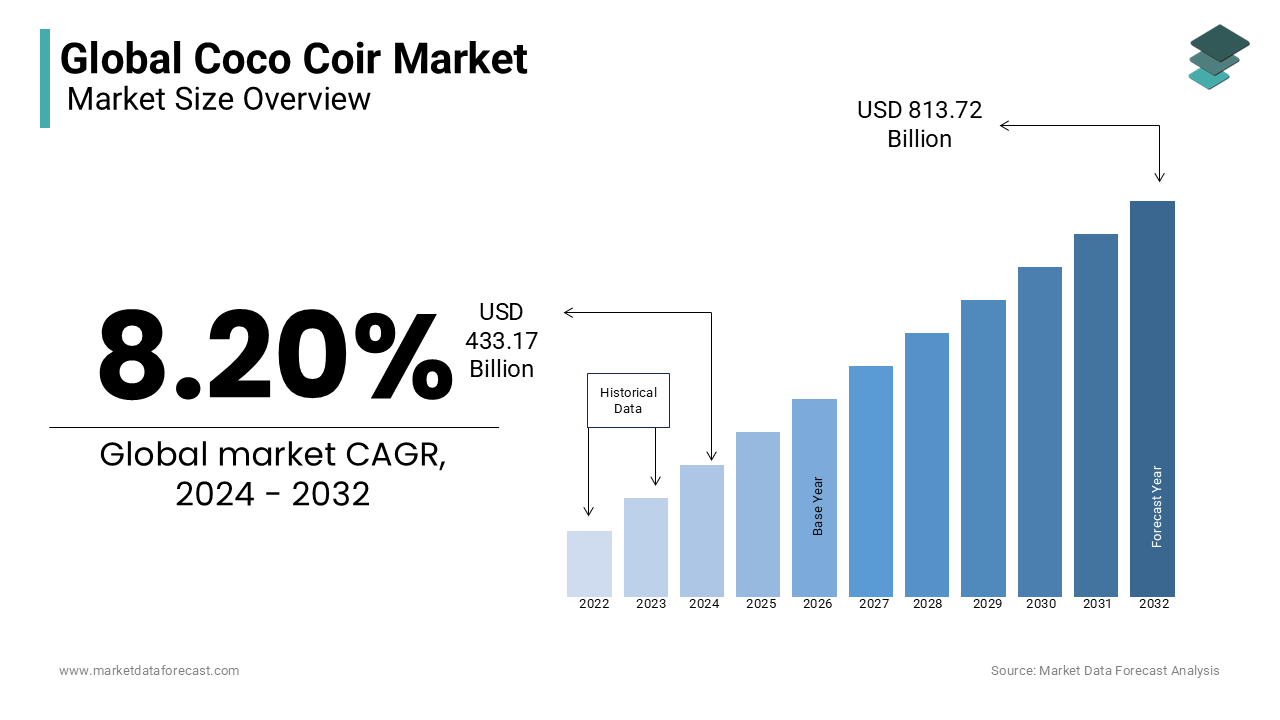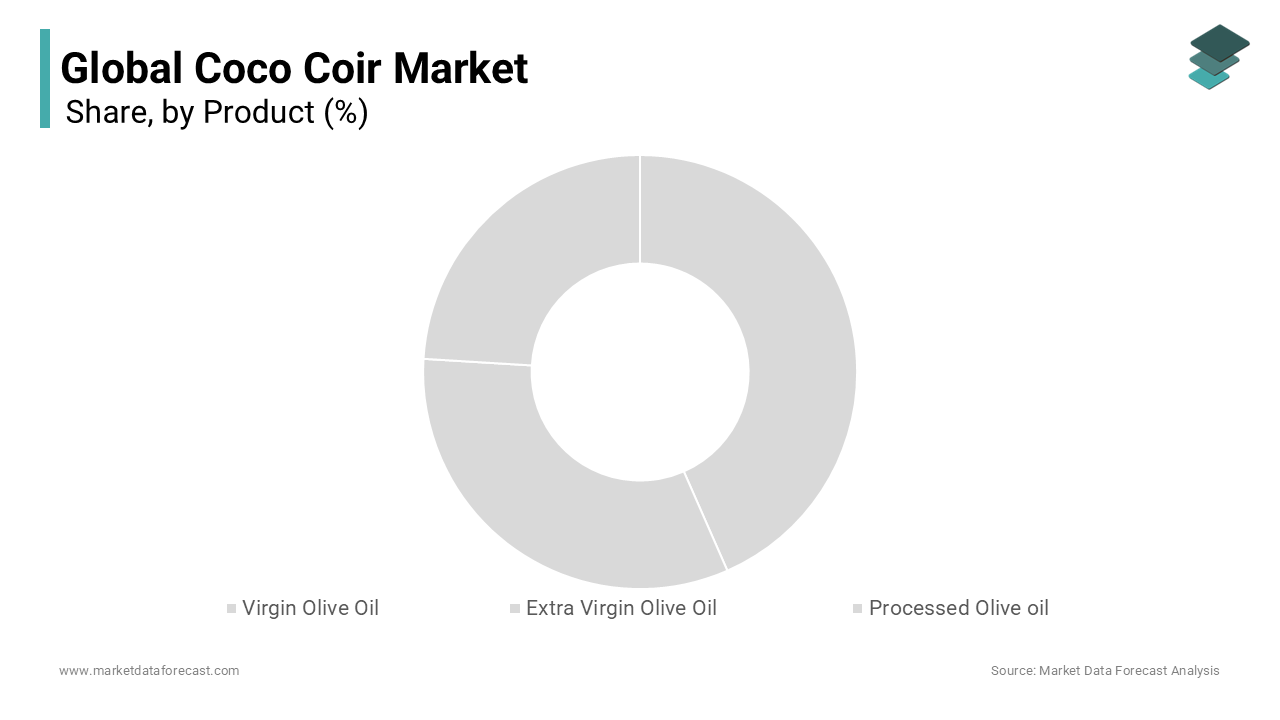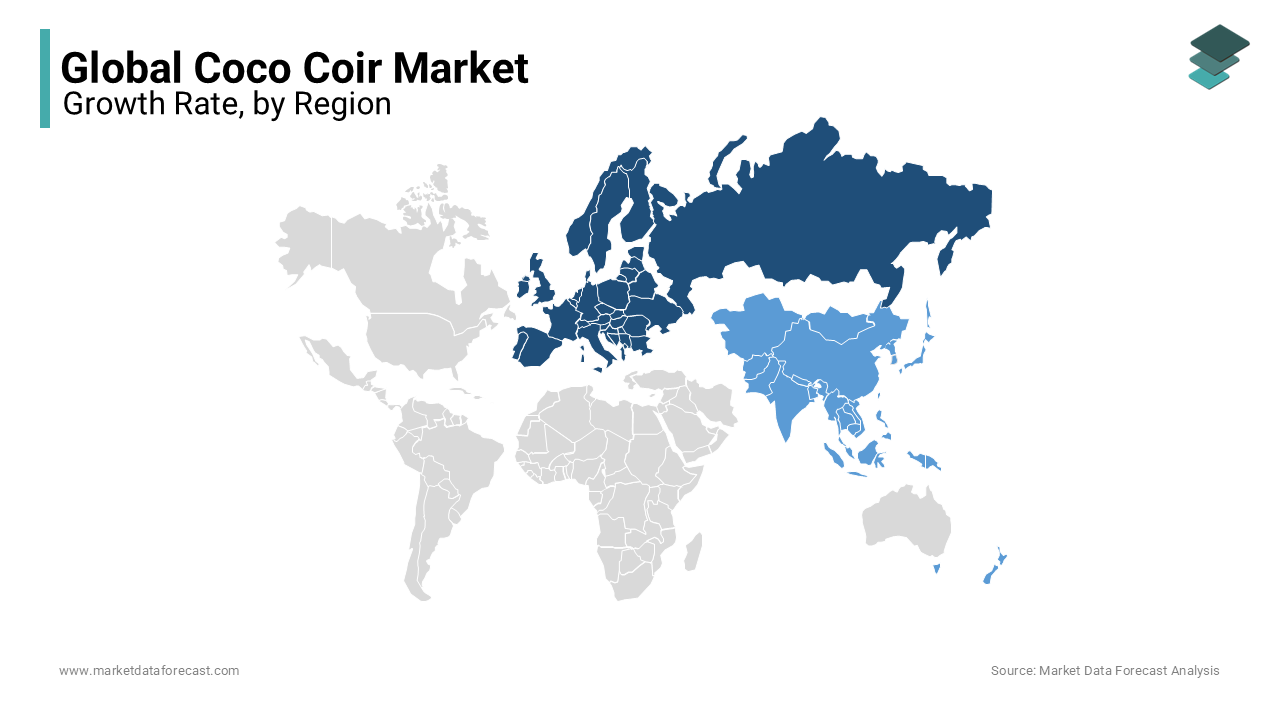Global Coco Coir Market Size, Share, Trends, & Growth Forecast Report - Segmented By Product (Coir Material, Bales, Coco Coir Grow Bags, Blends & Loose Substrate, Open Tops, And Others), Application (Coco Nets & Twines, Husk, Rope & Cordage, Stitched Mats, Coconut Meals, And Others), Consumer (Sellers And Green Houses), And Region (North America, Europe, APAC, Latin America, Middle East And Africa) – Industry Analysis From 2025 To 2033
Global Coco Coir Market Size
The global coco coir market size was calculated to be USD 433.17 billion in 2024 and is anticipated to be worth USD 880.45 billion by 2033 from USD 468.69 billion In 2025, growing at a CAGR of 8.20% during the forecast period.

Coco coir, also known as coconut fiber, is extracted from the outer shell of the coconut, which is a coarse natural fiber, rigid and flexible natural thread that is extracted manually or by machine from the outer shell of the coconut. White fibers and brown fibers are two common types of coconut fibers derived from aged coconut shells. Coir is stronger because it has the highest concentration of lignin, but it is less flexible than cotton and is not suitable for dyeing. White fiber and brown fiber are two common types of coconut fiber that are derived from aged coconut shells. Coco coir is considered an environmentally friendly product suitable for hydroponics and horticulture because it absorbs water. Coco coir products are widely applied due to their advanced properties, such as high absorbency, high durability, and ability to control soil erosion. Coco coir is traditionally used for twine, coir string, brushes, brooms, rugs, doormats, and others. Coir is further modified with various types of products, such as coir pith, coir fiber, coir rope, coir pith blocks, coir yarn, bales, etc., encouraging more industries to use Coco coir products. With the expansion of the interior decoration industry, the demand for eco-friendly products with light characteristics is increasing rapidly, and the Coco coir market is growing.
MARKET DRIVERS
The growing demand for coco coir in the agricultural industry, the geotextile industry and the consumer's propensity for green products are primarily driving the coco coir market growth.
With the rise of the upholstery industry and the rising need demand for eco-friendly products with lightweight properties, the market for Coco coir is growing. Coco coir is considered an environmentally friendly product, and because it absorbs water, it is suitable for hydroponics and horticulture. Consumers' propensity for organic products is playing an important role in the growth of the Coco coir market. In addition, coconut shells improve the drainage of agricultural beds. The main by-product of coconut is the coconut shell from which the Coco coir is extracted. This extraction process produces large amounts of coagulate dust or collateral pieces that have gained considerable traction in the Coco coir market due to its use as a growing medium in horticulture. Therefore, the coir pith is composted to reduce the ratio of carbon and nitrogen, reduce the content of lignin and cellulose, and increase the value of the manor. Coco coir compost reduces bulk and converts plant nutrients into usable forms. Therefore, there is a growing demand for Coco coir in horticultural agriculture. In addition, the high water content and the many benefits that the use of Coco coir in agriculture offers, such as a balanced carbon-to-nitrogen ratio, have driven demand, which has fuelled the growth of the global Coco coir market. Most vegetables grow best in neutral conditions, and the Coco coir is naturally neutral, so no additional additives are required to equalize acidity. Environmental awareness has increased around the world in recent years. In addition, government initiatives that promote horticultural-based fruit and vegetable agriculture and increase environmental awareness will drive the worldwide growth of the coco coir market. In particular, as customers' awareness of Coco coir warming and climate change has increased, they have become more cautious in purchasing the features of the products they buy.
The clean production of coconut products is a relatively new preventive environmental strategy, helping to increase the resource efficiency of processes, products, and services and reduce risks to people and the environment. Along with the expansion of the interior decoration industry, the increased demand for environmentally friendly products with lightweight properties is a key factor driving the growth of the global Coco coir market size. In addition, demand has increased due to a number of benefits offered by the use of Coco coir in agriculture, such as high moisture content and a balanced ratio of carbon to nitrogen, which has strengthened the Coco coir business worldwide. The Coco coir market has seen remarkable growth in recent years, and it is analyzed that the market will grow in a similar manner during the outlook period. The Coco coir market looks promising during the foreseen period due to key factors such as rising fuel prices, increasing demand for electric vehicles, the entry of Coco coir automakers into emerging markets, and government initiatives. The growing demand for green products and the light weight of the core are driving the growth of the Coco coir industry. Since it is a material that is found in nature, it is completely renewable and is therefore considered an excellent option for environmental sustainability. The growth of the end-user industry and the by-products obtained from the core are driving the growth of the global Coco coir market.
MARKET RESTRAINTS
The use of synthetic-based products is a major factor slowing the growth of the worldwide Coco coir market.
REPORT COVERAGE
|
REPORT METRIC |
DETAILS |
|
Market Size Available |
2024 to 2033 |
|
Base Year |
2024 |
|
Forecast Period |
2025 to 2033 |
|
CAGR |
8.20% |
|
Segments Covered |
By Product, Application, Consumer, and Region |
|
Various Analyses Covered |
Global, Regional and Country Level Analysis; Segment-Level Analysis; DROC; PESTLE Analysis; Porter’s Five Forces Analysis; Competitive Landscape; Analyst Overview of Investment Opportunities |
|
Regions Covered |
North America, Europe, APAC, Latin America, Middle East & Africa |
|
Market Leaders Profiled |
Pilipinas Ecofiber Corporation, Firedust, Lima Group, Universal Coco Indonesia, Coco Green Pvt Ltd, Consarc Pvt Ltd, Pelemix Ltd, Cocofiber, Bali Coco Fiber, and Lanka Coco Products |
SEGMENTAL ANALYSIS
Global Coco Coir Market Analysis By Product

Depending on the product, Coco coir grow bags segment held the largest share in 2019. This is because grow bags come in standard sizes and come in a variety of fiber sizes, which can be flat or smaller bags.
Global Coco Coir Market Analysis By Application
The coco flour segment dominated the Coco coir market in 2019 and is supposed to remain dominant during the conjecture period. This is due to its wide range of applications in agriculture due to its fine and homogeneous structure. Coco wheat is mainly used as a substrate for various crops, so in the future, demand from the agricultural sector is expected to increase, contributing to the growth of the market.
Global Coco Coir Market Analysis By Consumer
The greenhouse sector had the highest revenues in 2019, this will shape the agricultural coco coir market in a way that we had not seen before. Farmers around the world need to increase crop yields by increasing the amount of agricultural land to grow their crops or by increasing the productivity of existing agricultural products.
REGIONAL ANALYSIS
Europe held a dominant position in the global Coco coir market in 2023. This is due to increased demand for hydroponic and horticultural applications, as palm husks are used to control soil erosion. Besides, the Asia Pacific is expected to be a lucrative region in this market by 2020, with increasing production of fiber from coir fiber products such as mats, coir, carpets, etc. in countries like India and Sri Lanka. Additionally, the government is focusing on increasing investment to expand the coconut business with a strategic plan to develop the coconut industry in the region, which also helps the growth of the Coco coir market.
KEY PLAYERS IN THE GLOBAL COCO COIR MARKET
Major Key Market Players in the global coco coir market are Pilipinas Ecofiber Corporation, Firedust, Lima Group, Universal Coco Indonesia, Coco Green Pvt Ltd, Consarc Pvt Ltd, Pelemix Ltd, Cocofiber, Bali Coco Fiber, and Lanka Coco Products.
RECENT HAPPENINGS IN THE MARKET
- In February 2019, Rx Green Technologies, offering lab-tested products for cannabis growers, launched CLEAN COCO, an agricultural substrate made from coconut palm husk.
DETAILED SEGMENTATION OF THE GLOBAL COCO COIR MARKET INCLUDED IN THIS REPORT
This research report on the global coco coir market has been segmented and sub-segmented based on product, application, consumer, & region.
By Product
- Coir Material
- Bales
- Coco Coir Grow Bags
- Blends & Loose Substrate
- Open Tops
- Others
By Application
- Coco Nets & Twines
- Husk
- Rope & Cordage
- Stitched Mats
- Coconut Meals
- Others
By Consumer
- Sellers
- Green Houses
By Region
- North America
- Europe
- Asia-Pacific
- Latin America
- Middle East and Africa
Frequently Asked Questions
1. What are the current trends in the coco coir market?
Some current trends in the coco coir market include increasing demand for organic and sustainable growing mediums, adopting coco coir in hydroponic systems, and developing innovative coco coir products such as blended mixes and compressed bricks for easy shipping and storage.
2. What factors are driving the growth of the coco coir market?
Several factors are driving the growth of the coco coir market, including the growing demand for organic and sustainable agricultural products, the versatility and effectiveness of coco coir as a growing medium, the increasing adoption of hydroponic farming methods, and the expanding urban farming trend.
3. What are some challenges facing the coco coir market?
Some challenges facing the coco coir market include competition from alternative growing mediums, quality control issues related to production, fluctuations in raw material prices, and limited awareness about coco coir among growers in certain regions. Additionally, transportation costs and logistics can pose challenges for suppliers of coco coir products.
Related Reports
Access the study in MULTIPLE FORMATS
Purchase options starting from
$ 2500
Didn’t find what you’re looking for?
TALK TO OUR ANALYST TEAM
Need something within your budget?
NO WORRIES! WE GOT YOU COVERED!
Call us on: +1 888 702 9696 (U.S Toll Free)
Write to us: sales@marketdataforecast.com
